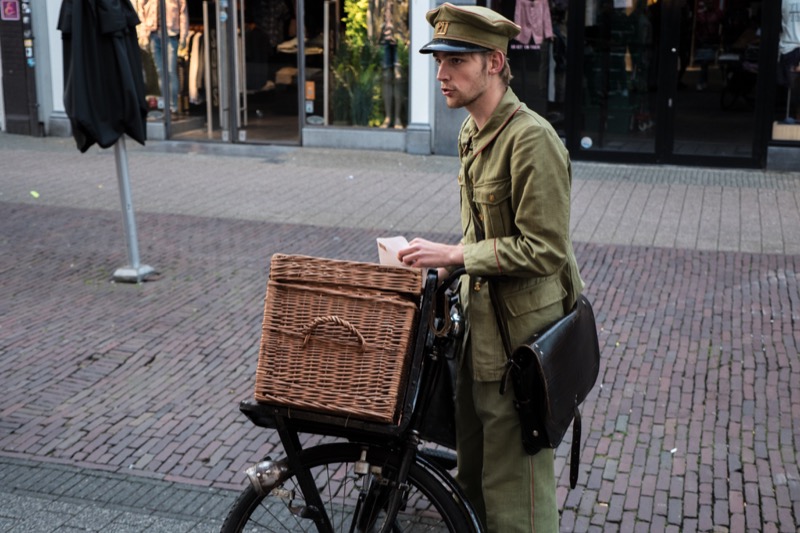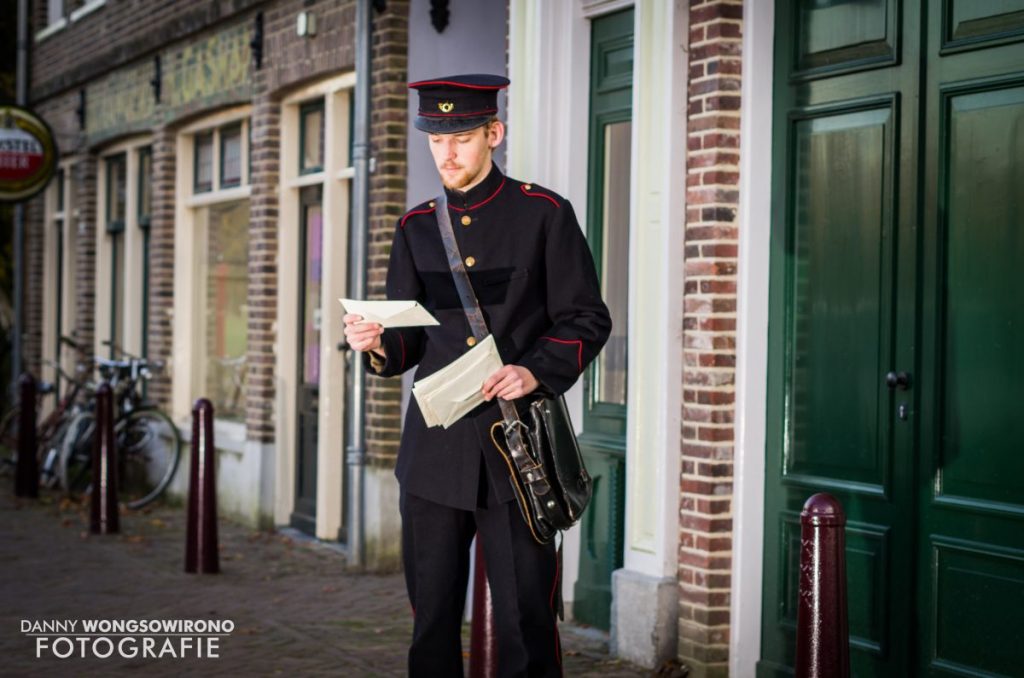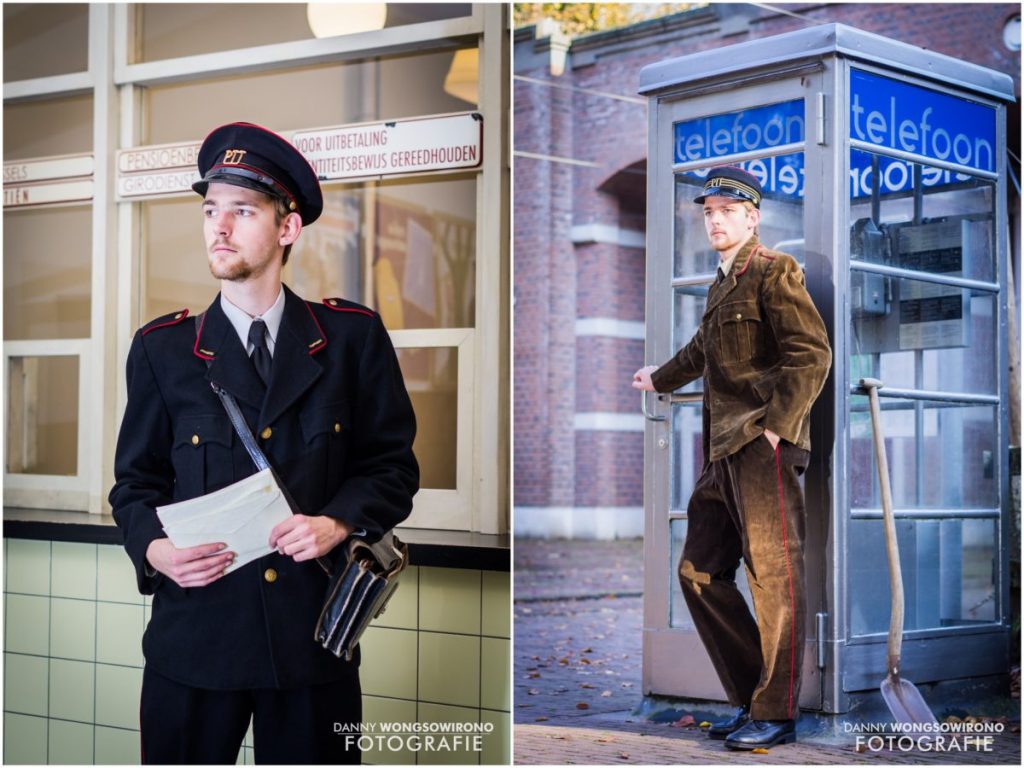Want to read in Dutch? Click here
We all know the feeling of wearing a new uniform. The moment you put on something you don’t normally wear. Sometimes it’s just for a short while, sometimes it becomes a habit because you have to wear it daily for your job. But what if you start to develop a passion for that particular uniform? Then you turn it into your profession! Jeffrey Koerhuis did just that. He collects, studies, and works in historical uniforms. Time for a conversation with this extraordinary man.
Jeffrey, where did your passion for uniforms originate?
“As a child, I always enjoyed acting in theater. When I had to play a postman for a role at the age of twenty, something happened to me. I had bought the uniform I wore, dating back to the sixties, myself, and it stuck with me. I wanted to know what time period it was worn in, the circumstances surrounding it, and why it looked the way it did. Besides my passion for theater, I have always been interested in history.
Then I realized I wanted to combine these two passions. I wanted to do something with postman uniforms and history. That’s why I decided to organize city walks in my hometown of Zwolle. I bought a postman uniform from the forties, as that is an interesting time. It was during the war, so there is a lot to tell about that period. In my walks, I combined the profession of a postman with the stories.”

Did you also study history or theater?
“After high school, I studied theater for a year, but it turned out not to be my thing. During my studies, I interned at the Openlucht Museum in the Netherlands. I walked around there as a historical character, dressed in old uniforms. When I dropped out of my studies, I was allowed to stay there, and that became my profession. I also tried to study for a history teacher degree during my work, but that didn’t suit me either. The modern school system is not suitable for me.”
So now you’re basically an actor as a historical character?
“Yes, you could say that. I am incredibly blessed with my work, I love it. In addition, I have also recently started working for the National Register of Mobile Heritage. This organization actually keeps track of all historical vehicles in a register. Everything that sails, drives, and flies is included.
But old uniforms, that remains a special passion of mine. That’s why I started collecting in my spare time. In the beginning, I collected all kinds of uniforms: from the Dutch Railways, Shell, shipping, and of course, those of postmen. It got a bit out of hand. At one point, I had so much that I actually had no place to store it all and delve into it.”
Did you stop collecting then?
“No, I decided to focus only on uniforms and other items from the Dutch Post and Telecommunication Services (PTT). For the other uniforms, I went looking for a new owner. That’s not so easy. Because if I sell it to a theater company, it often gets cut up. And when someone wants it to wear during, for example, carnival, it often gets damaged. I think that’s a shame. That’s why I prefer to give or sell it to a collector or museum. It’s also very nice because you build an interesting network with people who have knowledge of this.”
What do you do with the postman uniforms now?
“I keep part of the uniforms at home, part is in storage. I now have all the uniforms of the former PTT, from 1878 to the present. But it doesn’t stop there. I check Marktplaats (a Dutch online marketplace) every day to see if something interesting is offered. Sometimes it’s a PTT cap, sometimes a jacket or pants. It’s all very interesting because each garment has its own story.”

Now you’ve made me curious! What’s a special story for you?
“One of my favorite stories is about a pair of shorts I have in my collection. For a long time, wearing shorts as a postman was not done. This would lower the profession’s image. But in 1999, there was a postman who thought it was unfair that women were allowed to wear skirts. That’s why he decided to put on a skirt from his wife and work in it. This action made headlines worldwide. It even appeared in the New York Times.
PTT was not happy about it. He was picked up off the street by a van. However, this action did bear fruit. When it was time for new work clothing, the men received zip-off pants. This allowed the postmen to wear long pants in winter and shorts in summer. By the way, did you know that ‘postman’ is not the official name?”
No, I didn’t know that. Have we always called this profession the wrong name?
“In the past, a postman was someone who brought mail from one post office to another. The one who delivered the mail to people’s homes was the letter carrier. Among the people, both had a good status because they were civil servants. But the letter carriers in big cities often looked down on the postmen because they mainly worked in rural areas.
In the eighties, the term ‘postman’ was introduced as a job title for package deliverers. Despite the distinction between the two functions, both post and package deliverers are colloquially called postmen.”

Photo right: The ribcord uniform was introduced around 1952 and was worn by telephony personnel ‘in the field’. Think of ‘workmen’ who had to lay telephone cables in the ground or connect telephones in houses. Jeffrey is very happy with the uniform in the photo because the original vest (made of ribcord) is still with it. With most uniforms, these have disappeared or were later worn out. This is because the vests did not have buttons with the PTT logo. So you could wear it without people realizing it actually belonged to a PTT uniform. By the way, each garment in this uniform was made by a different manufacturer.
Both uniforms (left and right in the photos) were made of very sturdy fabric. So sturdy that you can stand the jacket and pants upright in the closet.
What are your plans for the future?
“In addition to my two jobs and collection, I am working on a number of projects. For example, I am making a documentary about World War II, which takes up a lot of time. I am also in talks with the Transport Museum in Nieuw Vennep to see if we can exhibit my collection there.
And I’m also working with a group of collectors to create an online database. As a collector, you have a lot of stuff, photos, and stories, but you can’t do much with it. That’s why I think it would be great to set up a large database with, among other things, photos. Then there is a central point where television programs, museums, and other interested parties can contact if they need something. It’s such a waste to keep it all indoors. Because it’s so interesting. History is to be shared!”
If you want to know more about (the work of) Jeffrey, check out his YouTube channel, website, or follow him on LinkedIn.
